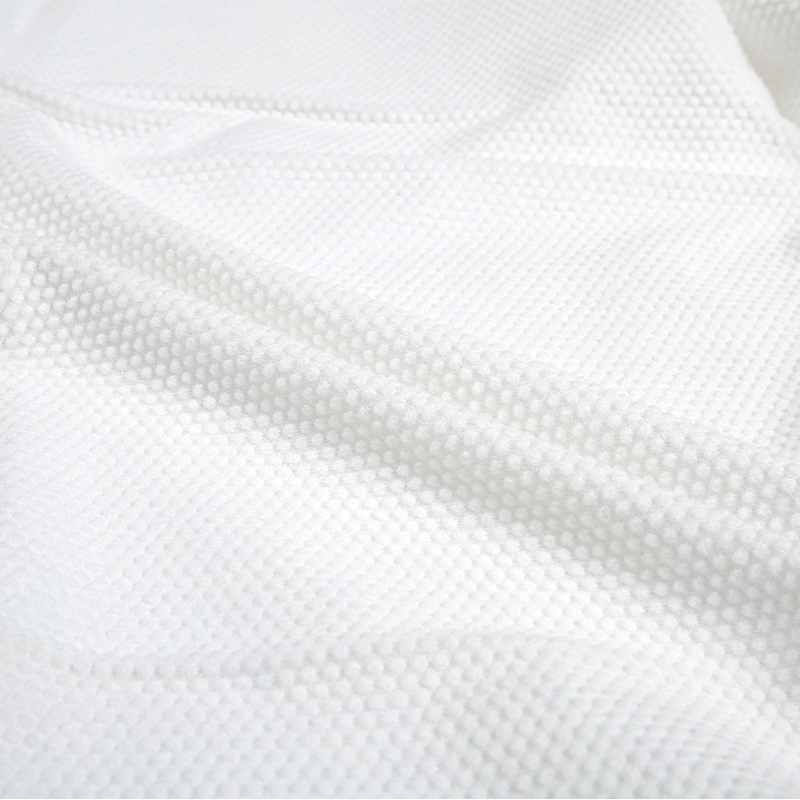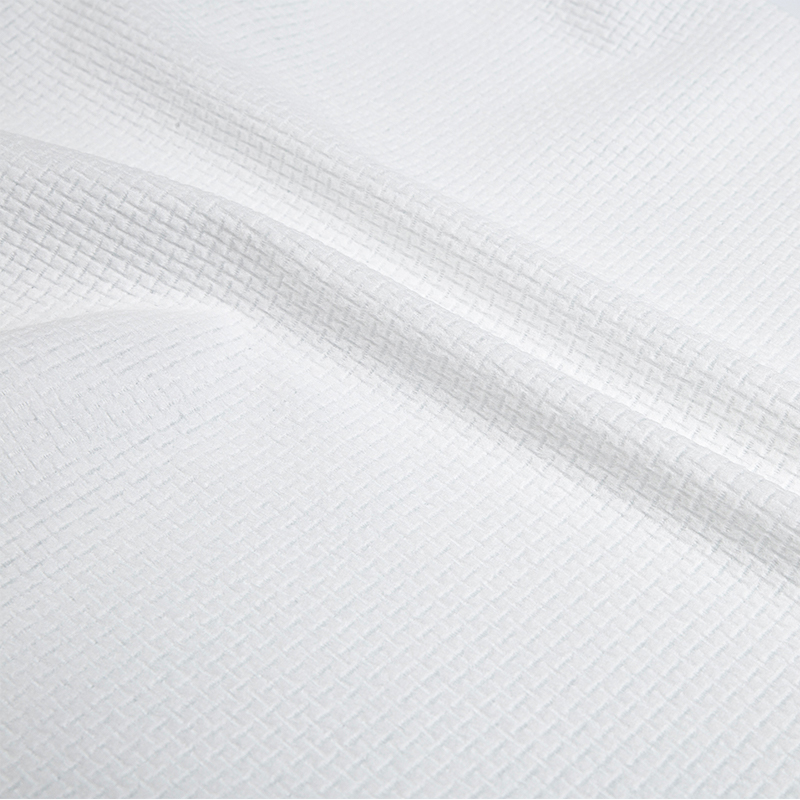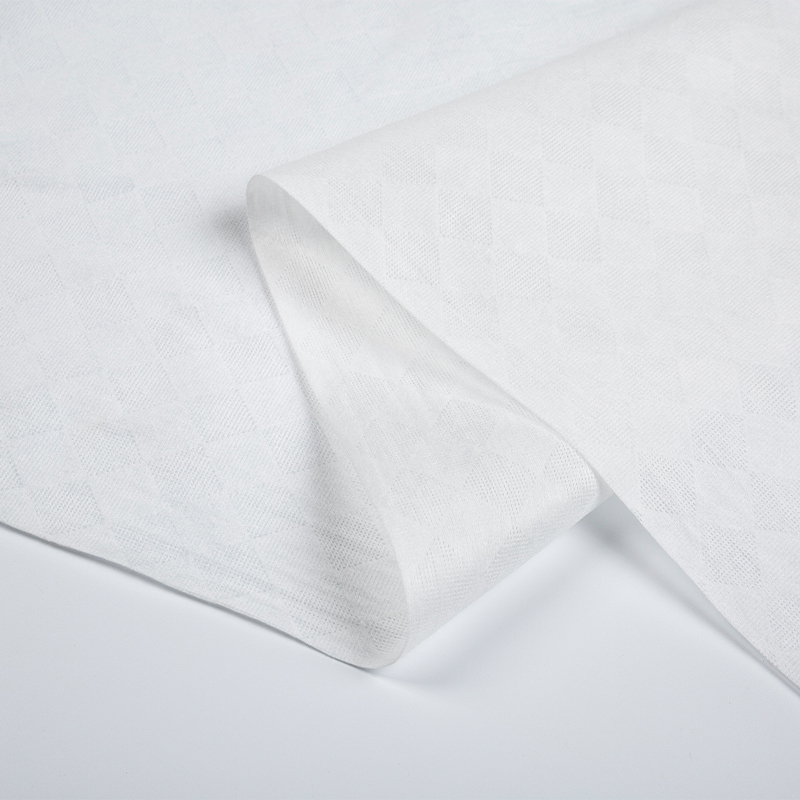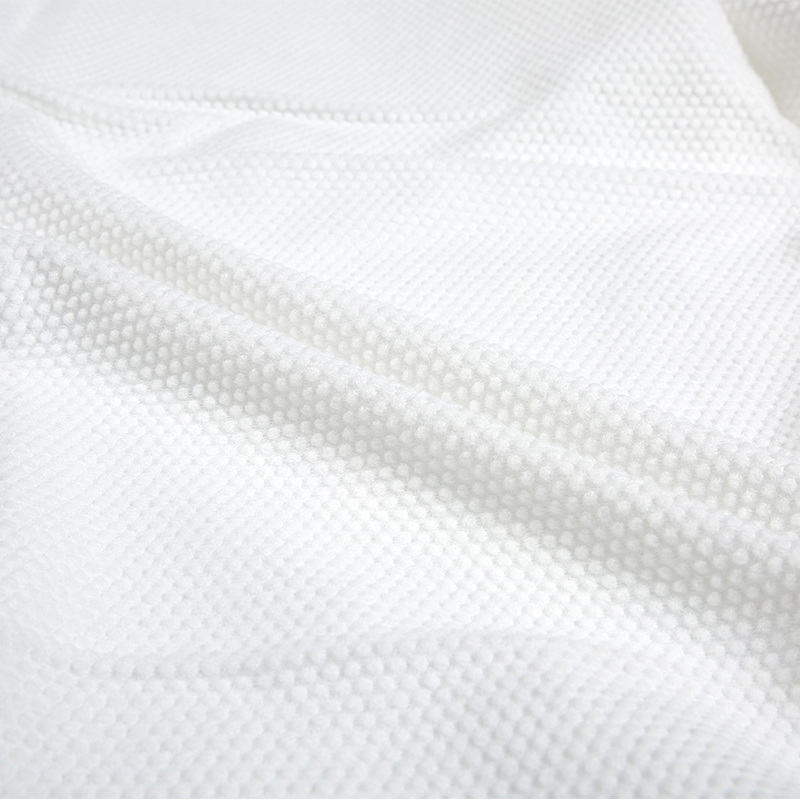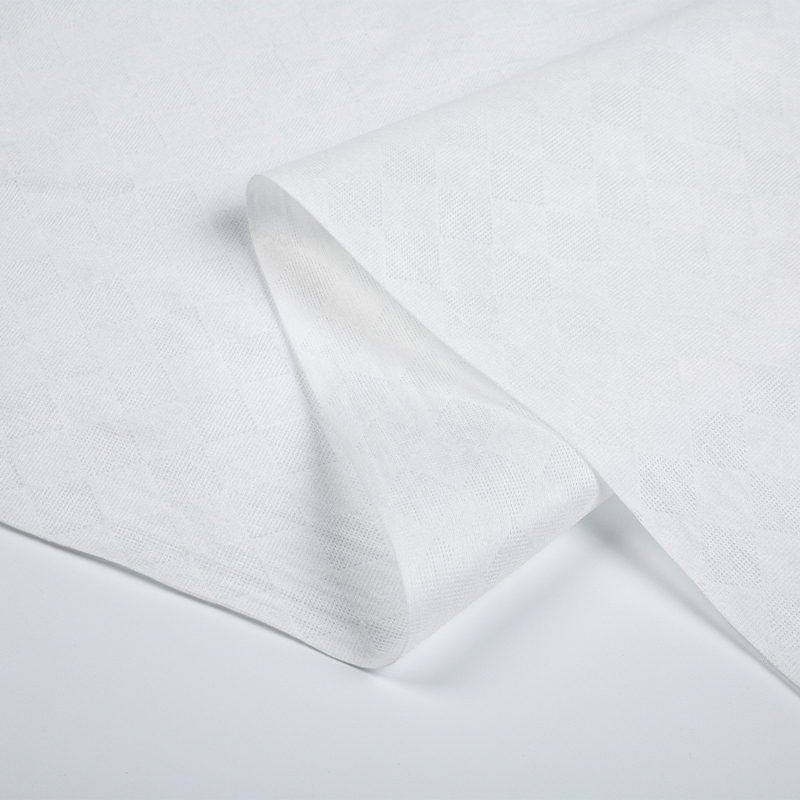Spunlaced nonwoven fabric concept: spunlaced nonwoven fabric, also called spunlace non-woven fabric, also known as "jet spunlace into cloth". The concept of "jet spun into cloth" is a mechanical needle punching process. The so-called "jet spunlace" is a high-strength water stream pierced into the fiber web to entangle the fibers, so that the original spunlace nonwoven fabric has a certain strong and complete structure.
The process flow is: fiber metering mixing-opening and removing impurities-mechanical messing carding-web pre-wetting-water needle entanglement-surface treatment-drying-winding-inspection-packaging. The spunlace device is a high-pressure water jet web that uses a high-spun puncturing nonwoven fabric to flow, so that the fibers in the fiber web are rearranged and entangled, and the ultra-fine fiber non-woven fabric has a complete structure, which has certain strength and other Performance of non-woven fabrics. The physical properties of this spunlace non-woven bag are different from the common needle-punched non-woven fabric, and it is the only non-woven fabric that can make its final product resemble a textile, both in terms of hand and microfiber nonwoven fabric properties. The superiority of the spunlace method:
There is no extrusion of the fiber web in the spunlace process, thereby increasing the bulkiness of the final product; without using a resin or a binder, the water-spun nonwoven fabric holds the inherent softness of the fiber web; The high degree of integrity avoids the fluffy phenomenon of the product; the fiber mesh has a high mechanical strength, up to 80% to 90% of the strength of the textile; the fiber mesh can be mixed with any kind of fiber. It is particularly worth mentioning that the spunlace web can be composited with any base fabric to form a composite product. Products with various functions can be produced according to different purposes.
Advantages of spunlace cloth: 1. Soft and drapable; 2. Good strength; 3. High hygroscopicity and fast wettability; 4. Low fuzzing; 5. Washing resistance; 6. No chemical additives; Similar textiles. The prospect of spunlace: Due to the advantages of spunlace, it has become one of the fastest technological advancements in the non-manufacturing industry in recent years. The development direction of non-woven fabrics is to replace textiles and knitwear. Spunlace cloth has become the most promising field in the textile market with its most like textile characteristics, excellent physical properties and high quality and low price.
Application of spunlace cloth:
First, medical use disposable surgical gowns, surgical drapes, operating tablecloths, surgical aprons, etc.; wound dressings, bandages, gauze, band-aid, etc.;
Second, clothing such as clothing lining, baby clothes, training clothes, carnival night disposable color clothes, all kinds of protective clothing such as surgical gowns;
Third, wipes such as household, personal, beauty, industrial, medical wet wipes, etc.;
Fourth, decorative cloths such as car interiors, home interiors, stage decorations, etc.;
5. Agricultural use such as insulation greenhouses, weed growth, harvest cloth, insect-proof and fresh-keeping cloth;
Sixth, spunlace non-woven fabrics can also be used for composite processing, which can produce "sandwich" type products and develop new composite materials for various purposes. Spunbonded nonwoven fabric: a method in which a filament is laid into a web after the polymer is extruded and stretched to form a continuous filament, and the web is subjected to its own bonding, thermal bonding, chemical bonding or mechanical reinforcement. To make the web into a non-woven fabric.
Features: high strength, high temperature resistance (long-term use in 150 °C environment), aging resistance, UV resistance, high elongation, stability and permeability, corrosion resistance, sound insulation, anti-mite, non-toxic. Main use: The main products of spunbonded non-woven fabrics are polypropylene polyester (long-fiber, staple fiber). The most common and most commonly used ones are non-woven bags, non-woven packaging, etc., and they are easy to identify. Because the embossing point of the spunbonded nonwoven fabric is rhombic.

 English
English 日本語
日本語 русский
русский Español
Español